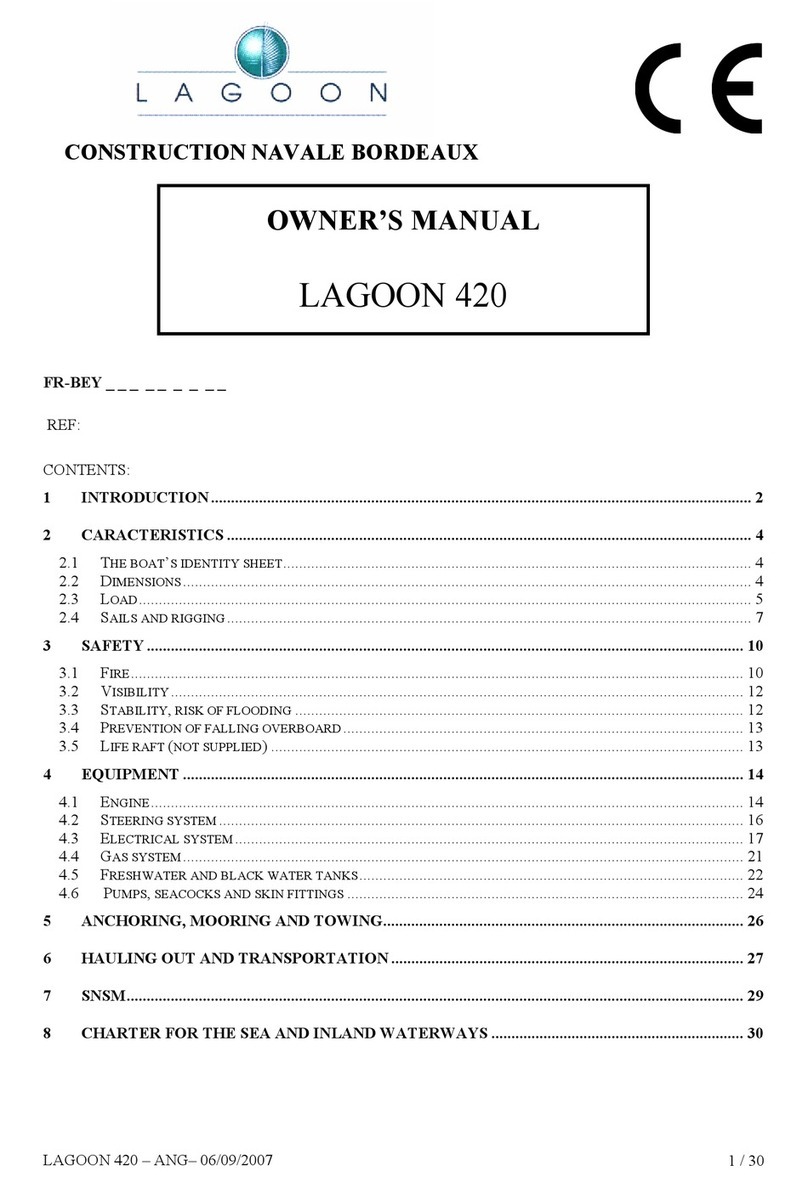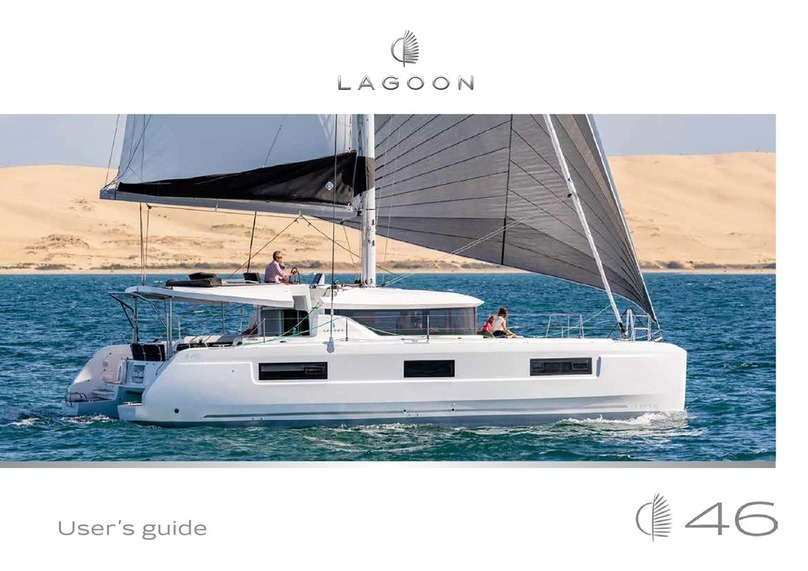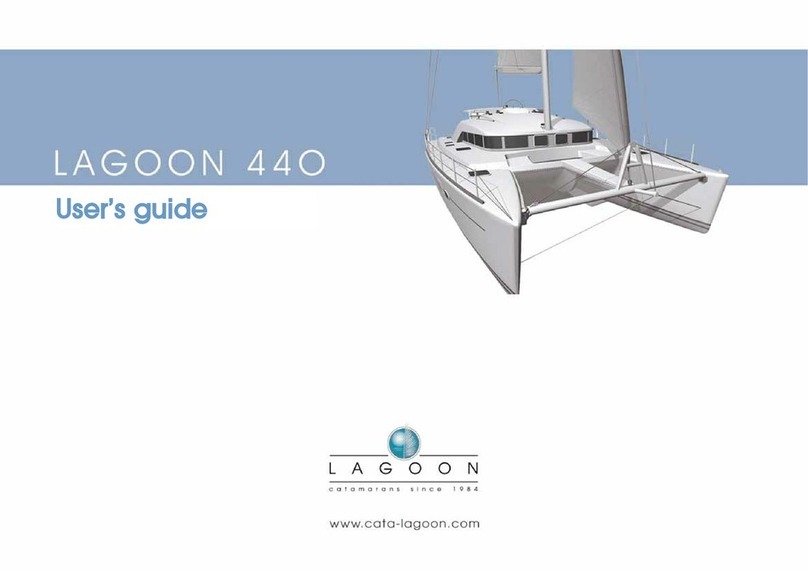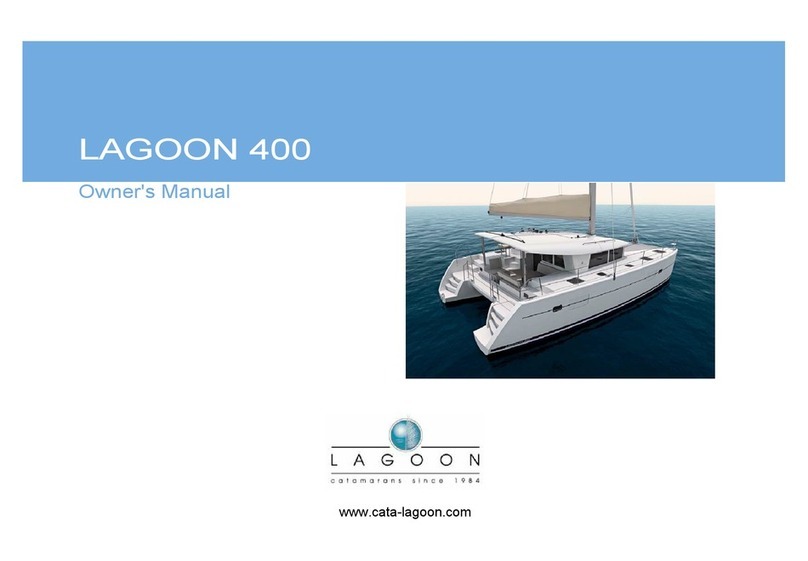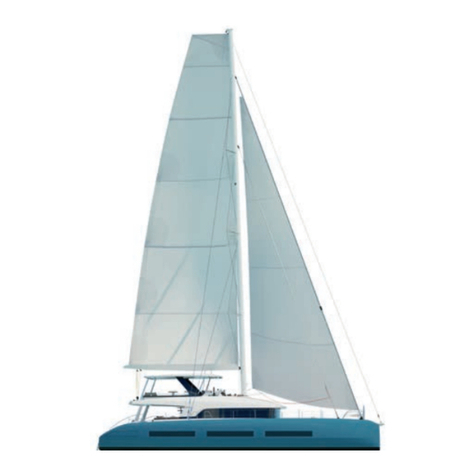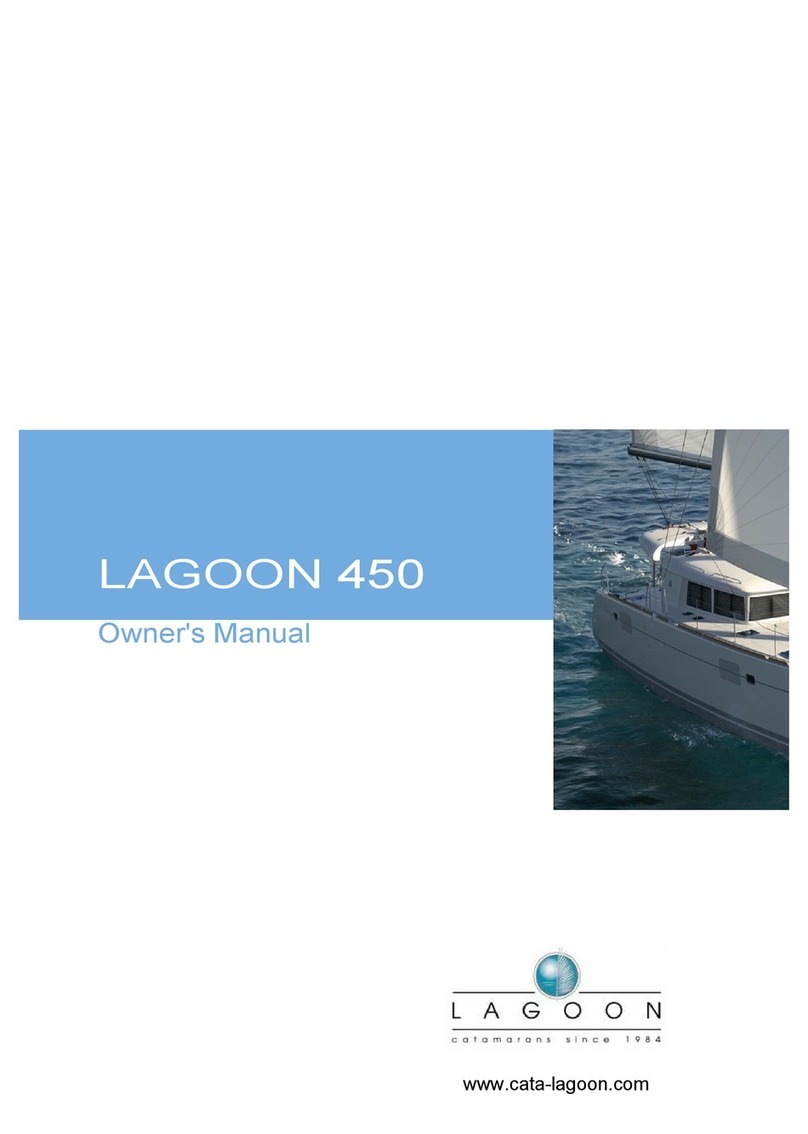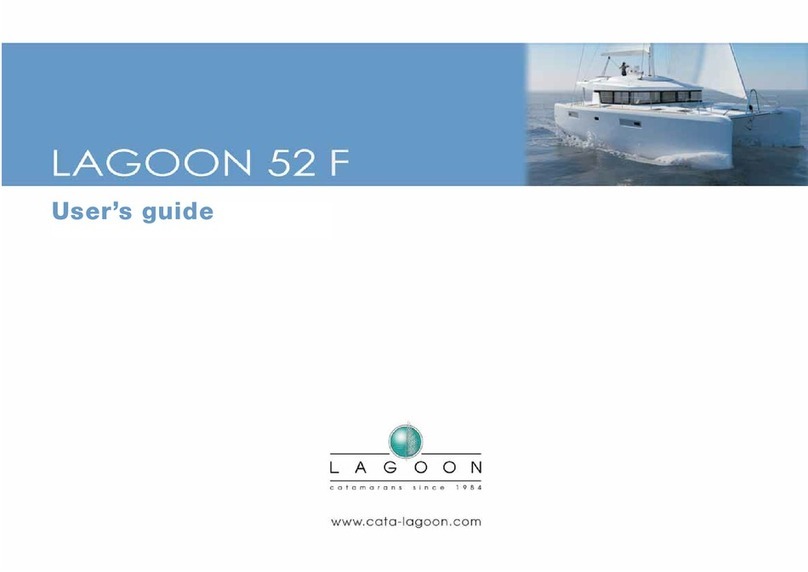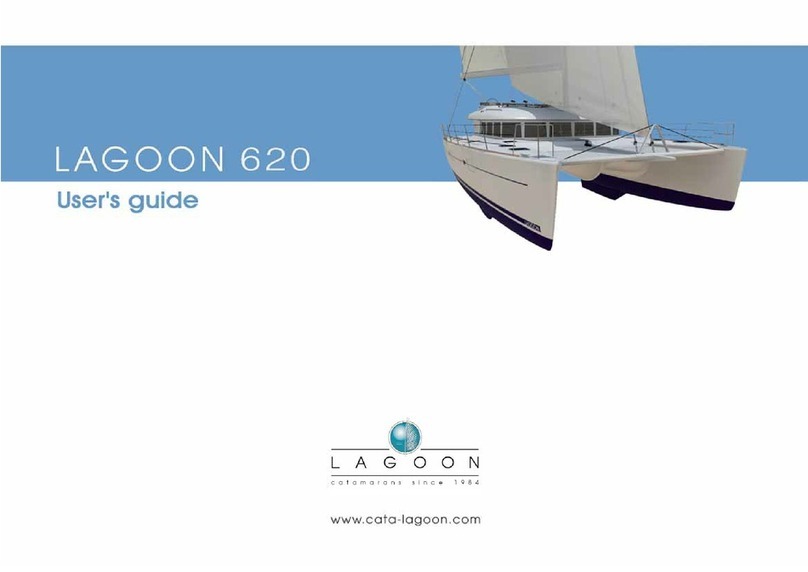
3. Inverter
The inverter panel does three things: it charges the batteries, gives you the
volt levels of the battery banks and it can be used to provide 110v power
without the need to connect to shore power or run the generator.
To charge the batteries:
When plugged into shore–power, the “charge” button needs to be switched
on; the green light will be illuminated. The “AC in” and one of the three
inverter status lights should be illuminated in the status bar. If these are not
illuminated check your shore power connection.
Before un-plugging from the dock power, press the charge button on the
panel and switch off all the breakers on the 110V panel, (see previous
pages), as well as the breaker on the dock power outlet. Do this process in
reverse when plugging into dock power.
To use the inverter:
1. Start the engines; bring the rpm up to 1400.
2. Press the “invert” button under the control section of the panel. The green
light on the switch will then illuminate.
3. All of the 110V outlets are now live.
4. Reverse steps 1, 2 & 3 to switch off the inverter, but run the engines for
ten minutes before switching it off.
Always ensure that you have switched the inverter off by checking that the
switch on the panel is no longer illuminated. Leaving the inverter on will
cause your batteries to rapidly lose their charge.
NB: The inverter panel will not operate the air conditioning unit; this is only
available under generator power or shore power.
Invert
button
Charger
button
(leave on at
all times)
Status bar
Battery 1:
engine
batteries
Battery 2:
domestic
batteries







